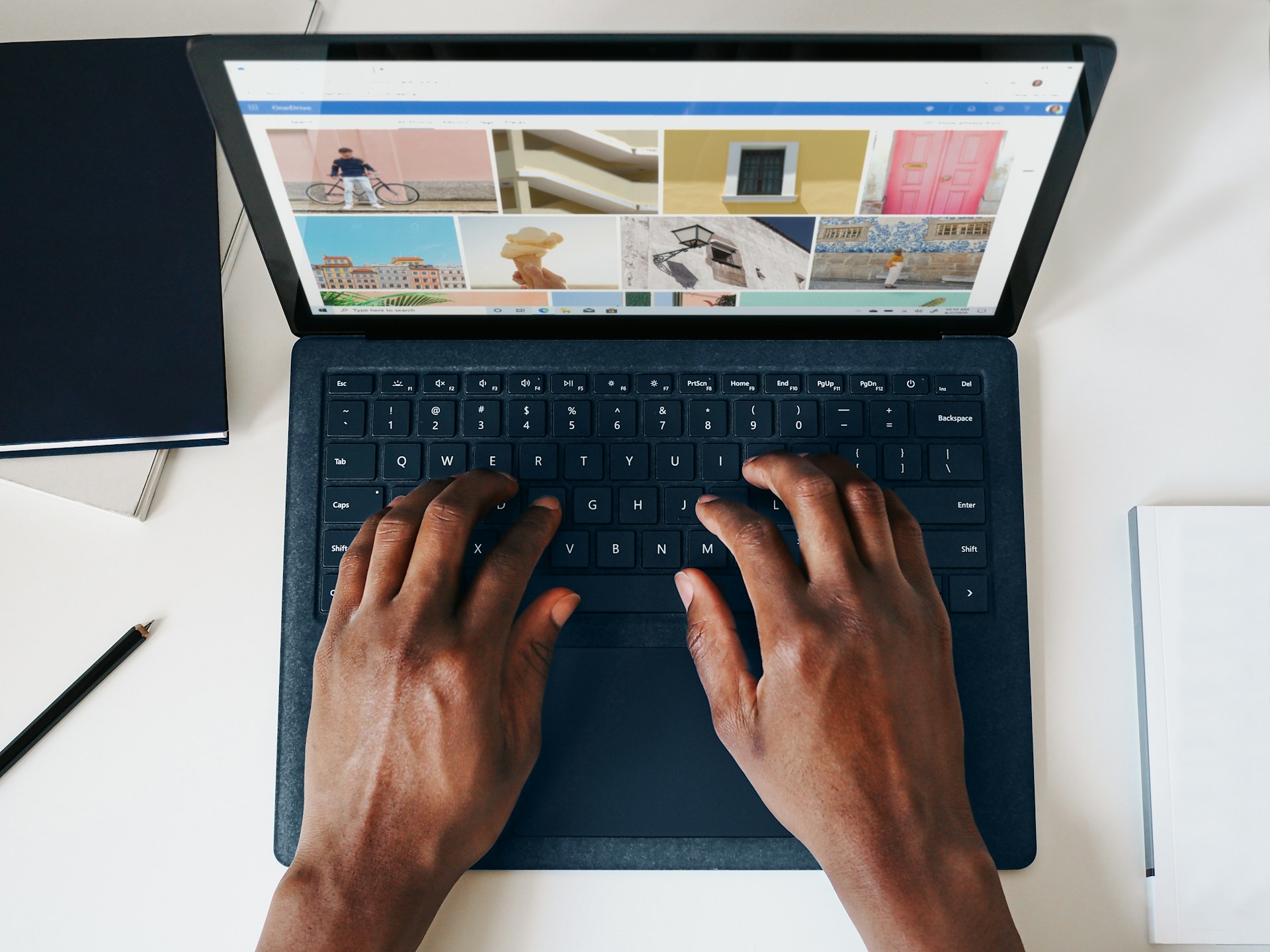Choosing to work with professional Webflow designers can transform the way you create and manage your SaaS website. These experts bring a wealth of knowledge and hands-on experience, offering guidance through every step of the design and development process. Whether you’re building from scratch or refreshing an existing site, their goal is to create something that reflects your vision while delivering measurable business outcomes.
Webflow is known for combining creative freedom with technical reliability. It’s highly favoured among SaaS businesses due to its visual editing capabilities, integrated CMS, and ability to produce clean, fast-loading websites without relying on third-party plugins.
So, what can you expect when teaming up with professional Webflow designers? Their role extends far beyond appearance—they focus on usability, performance, scalability, and alignment with your product or service. With their help, your website can become one of your most powerful marketing tools.
1. Why Choose Webflow for Your SaaS Website?
Webflow offers a host of advantages that make it an ideal choice for SaaS companies looking to build high-performing websites. Its appeal lies in balancing control and flexibility with simplicity and speed.
1. Visual design flexibility. Webflow features an intuitive visual editor where designers can see precisely how changes will look in real time. There’s no need to go back and forth between code and front-end previews, which simplifies and speeds up the design process.
2. Built-in responsive design. A responsive layout is critical in today’s mobile-first environment. Webflow makes it easy to ensure your website looks polished and works properly across all screen sizes and devices.
3. Customizable interactions and animations. Engaging users is easier with Webflow’s interaction tools. Designers can create hover effects, load animations, sliding panels, and other interactive components that add life and depth to your website without manual coding.
4. Minimal reliance on plugins. Unlike platforms that require several add-ons and plugins just to function, Webflow offers many essential features natively. This reduces the risk of performance issues, plugin conflicts, or security vulnerabilities.
Professional Webflow designers know how to leverage these tools to your advantage, resulting in a more appealing, user-focused, and stable website overall.
2. The Initial Consultation: Setting Expectations
The consultation stage is about laying the groundwork. It’s where you and the designer dive into details, outline goals, set a direction, and begin developing trust. This initial meeting can take place by phone, video, or in person depending on your preferences.
During this session, the designer gets to know your business, product, audience, and vision. You’ll likely discuss:
- Your short- and long-term business goals
- Target users and their behaviours
- Competitor websites and inspirations
- Specific page requirements
- Branding guidelines and assets
Open communication at this point is vital. The goal is alignment—making sure both parties are working from the same foundation. Designers will ask plenty of questions to understand your brand voice, target market, and what “success” means for your project. This not only prevents costly misunderstandings but also helps everyone move forward confidently.
3. Understanding Your Vision: Translating Ideas into Designs
Every SaaS brand has a story, and turning that into a visual experience your users understand is one of the most important parts of the process. Once the goals are defined, Webflow designers begin shaping your vision into tangible design principles.
Expect to see sketches, mood boards, or sample layouts that interpret what you shared during the consultation. You might look at colour palettes, typography options, and design motifs. If you’re unsure about what you want, these materials help narrow things down and start movement in the right direction.
This stage is collaborative. Your feedback shapes the direction. Designers work to maintain a strong balance between visual impact and functionality, incorporating key insights from your brand identity to build a cohesive tone. Together, you’ll work on identifying what will resonate most with your users and reflect the values of your brand.
4. The Importance of Wireframes in Webflow Projects
Wireframes are critical documents that outline the core structure of each page of your website. Think of them as blueprints. They’re not concerned with colour or style, but rather with layout and functionality.
They’re helpful for several reasons:
- Clarifying the structure of each page. You’ll know exactly what content goes where and how users are expected to interact with it.
- Focusing on core functionality. Without colour or imagery, wireframes force everyone to consider how well a page flows, how easy navigation is, and whether users can complete desired actions smoothly.
- Guiding effective feedback. It’s much easier and faster to adjust layouts at this stage than after full design elements have been implemented.
Wireframes foster strong alignment and can save time and money. They also prevent revisions further down the line by answering design and usability questions early in the process.
5. Collaborating on Design Mockups
Once wireframes are approved, designers move into the mockup phase where you begin to see the real look and feel take shape. This stage includes adding brand colours, imagery, typefaces, styling, and polished layouts.
When reviewing mockups, it’s important to:
1. Look for brand consistency. Review each element to ensure alignment with your brand guidelines. Make sure colours, fonts, and logos are applied correctly.
2. Assess layout and readability. Navigation and content hierarchy should feel intuitive. Pages should guide users naturally through the content.
3. Consider cross-device utility. Mockups should show how sections adapt to mobile, tablet, and desktop screens.
You’ll have the chance to collaborate on revisions before finalizing the elements for development. Participation at this stage helps ensure the final site looks, behaves, and feels exactly how you envisioned.
6. Customizing Templates vs. Building from Scratch
Next comes the decision on whether to use an existing Webflow template or move forward with a custom site design. Both approaches have benefits, and the best choice depends on the needs and priorities of your SaaS business.
Templates can be a solid choice if you want to save time and reduce development costs. They come with pre-built layouts and styles, allowing Webflow designers to focus on branding and minor customization.
However, if you need unique functionality, UX flows, or a site with a completely distinct identity, custom design may be best. Designers are free to build exactly the experience that matches your brand. This approach is often better suited for businesses with complex needs or long-term scaling plans.
Deciding between the two is typically part of the planning conversation and will be influenced by timeline, budget, and project scope. Professional Webflow designers will help guide you toward the option that serves your goals best.
7. Key Features That Professional Webflow Designers Offer
Working with professionals gives you access to a wide range of Webflow features and skills that go beyond design basics. Some of the standout elements include:
- Custom animations and transitions that enhance site engagement
- Integrated CMS for content-heavy websites, making updates easier
- Clean and lightweight code export for performance optimization
- Built-in SEO optimization tools
- Scalable design workflows for future growth
Designers bring more than capability—they bring insights from experience. They understand how users behave on SaaS websites and build features that guide users to explore, stay, and act with minimal friction.
8. How Webflow Designers Ensure Mobile Responsiveness
Mobile traffic often accounts for more than half of all web visitors, and SaaS websites are no exception. That’s why professional Webflow designers take mobile responsiveness seriously from day one.
They start using a mobile-first approach, making sure interfaces perform well on small screens before scaling up. Navigation menus become easier to tap, content stacks vertically for better readability, and form fields resize automatically for ease of use.
Designers also use previews to see how the site performs on a range of devices. They make adjustments based on screen size, browser, and other benchmarks to guarantee a consistent and seamless experience no matter how someone finds your site.
Testing plays a big part in refining responsiveness. And because Webflow allows these responsive edits directly in the visual editor, designers can test and correct design issues far faster than through traditional coding.
9. The Role of Interactivity and Animations in Webflow Designs
Interactivity turns a static page into an engaging experience. Animations not only boost visual appeal but guide users to understand your content better.
Simple touches like hover animations, scroll reveals, or loading effects can signal that a website is modern and trustworthy. More advanced features like triggered transitions, embedded videos, or drag-and-drop components add a dynamic element that encourages user interaction.
Webflow enables designers to do this directly within the design tool, which eliminates the need for external plugins. These elements are not just decorative—they improve navigation, highlight calls to action, and keep visitors scrolling.
The key is balance. When used intentionally, interactivity can communicate hierarchy and focus attention. Designers help ensure animations support the user experience rather than distract from it.
10. SEO Best Practices Implemented by Webflow Designers
Webflow is built with SEO in mind, and professional designers know how to make the most of its built-in tools to help drive visibility.
They start with on-page elements such as title tags, alt text, header structures, and clean URLs. Metadata is carefully written to reflect user intent and enhance click-through rates in search results.
Performance also plays a part in SEO. Designers compress image sizes, eliminate unnecessary code, and reduce loading times—all of which lead to higher search rankings and a better user experience.
Schema markup, social media preview customization, and site map generation are other features that experienced designers know how to implement. The result is a technical foundation that supports ongoing SEO growth.
11. Importance of Ongoing Support and Maintenance
Launching the site is only the beginning. Ongoing support ensures that the website keeps working smoothly, adapts to future changes, and stays secure.
Webflow sites require updates over time—new blog posts, product releases, customer testimonials, or changes to branding. Whether it’s refreshing content or updating features, a Webflow designer can help manage that workflow.
Maintenance might also include performance testing, fixing bugs, or tackling security updates. With professionals on hand, problems are often spotted and solved quickly, minimizing downtime or user issues.
A good design team will also help you evaluate analytics, learn from user behaviours, and adjust your site accordingly.
12. Communication Tips for Working with Webflow Designers
Strong communication helps avoid confusion and keeps the project on track. A few key tips to make your collaboration more effective include:
1. Be transparent about goals and deadlines.
2. Share examples of websites, colours, or layouts you like.
3. Offer constructive, specific feedback rather than vague suggestions.
4. Be timely with approvals or questions to keep progress moving.
5. Trust the designer’s expertise as much as they value your vision.
A true partnership between client and designer leads to better outcomes and a smoother process from start to finish.
13. How to Provide Effective Feedback During the Design Process
Design feedback is not only encouraged—it’s necessary. The more you can share, the closer the final result will align with your expectations.
Here are a few ways to give effective input:
- Focus on function before appearance. Does the layout support your business goals?
- Highlight what works as well as what doesn’t. Positive feedback reinforces details worth keeping.
- Group comments. Try to consolidate your notes into themes or by section to simplify revisions.
- Use visuals. Marking up screenshots or referencing examples can clarify ideas faster than words alone.
Remember, feedback should be a conversation, not a one-time critique. Keeping communication open and supportive fosters a productive workflow.



